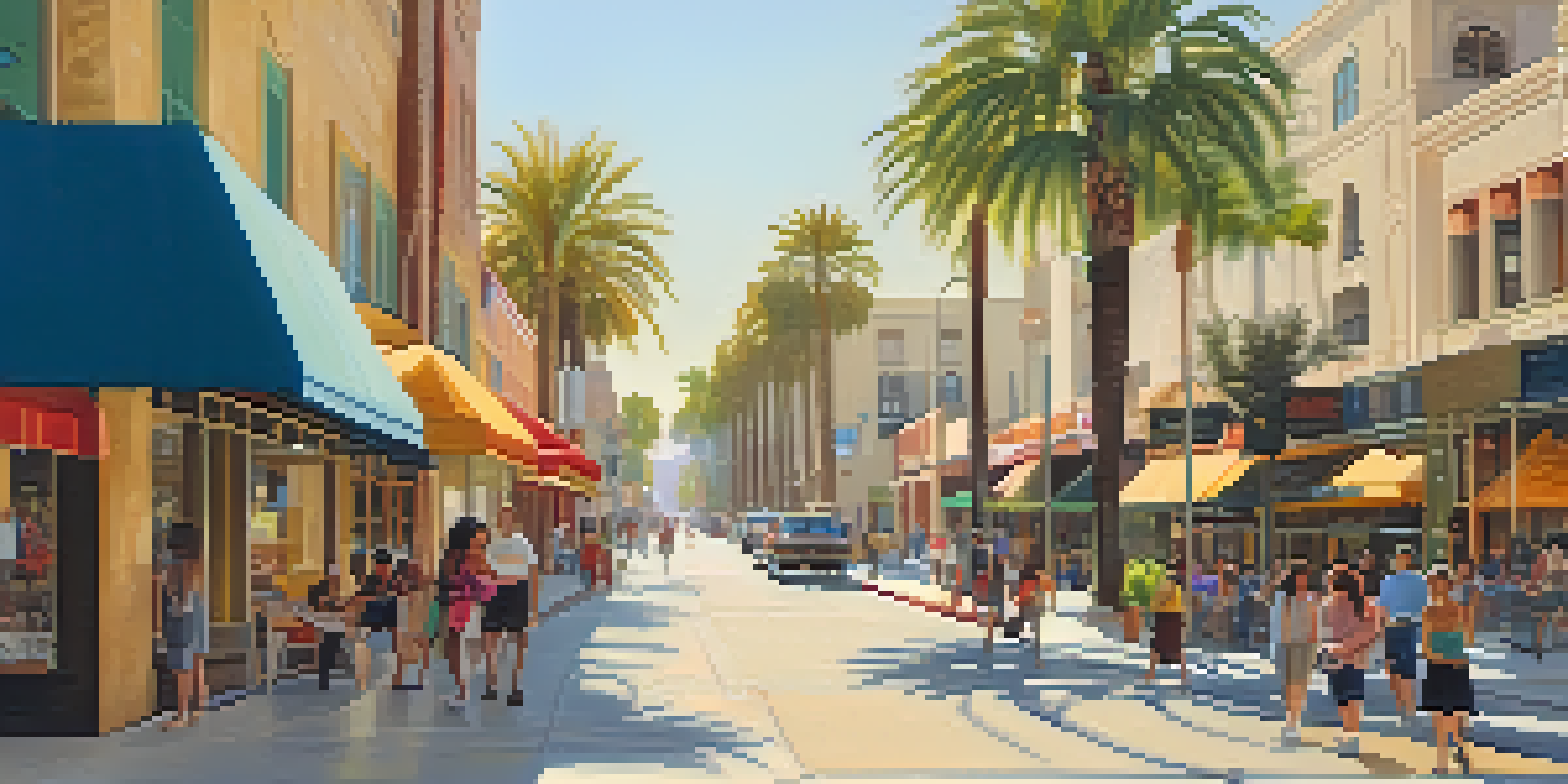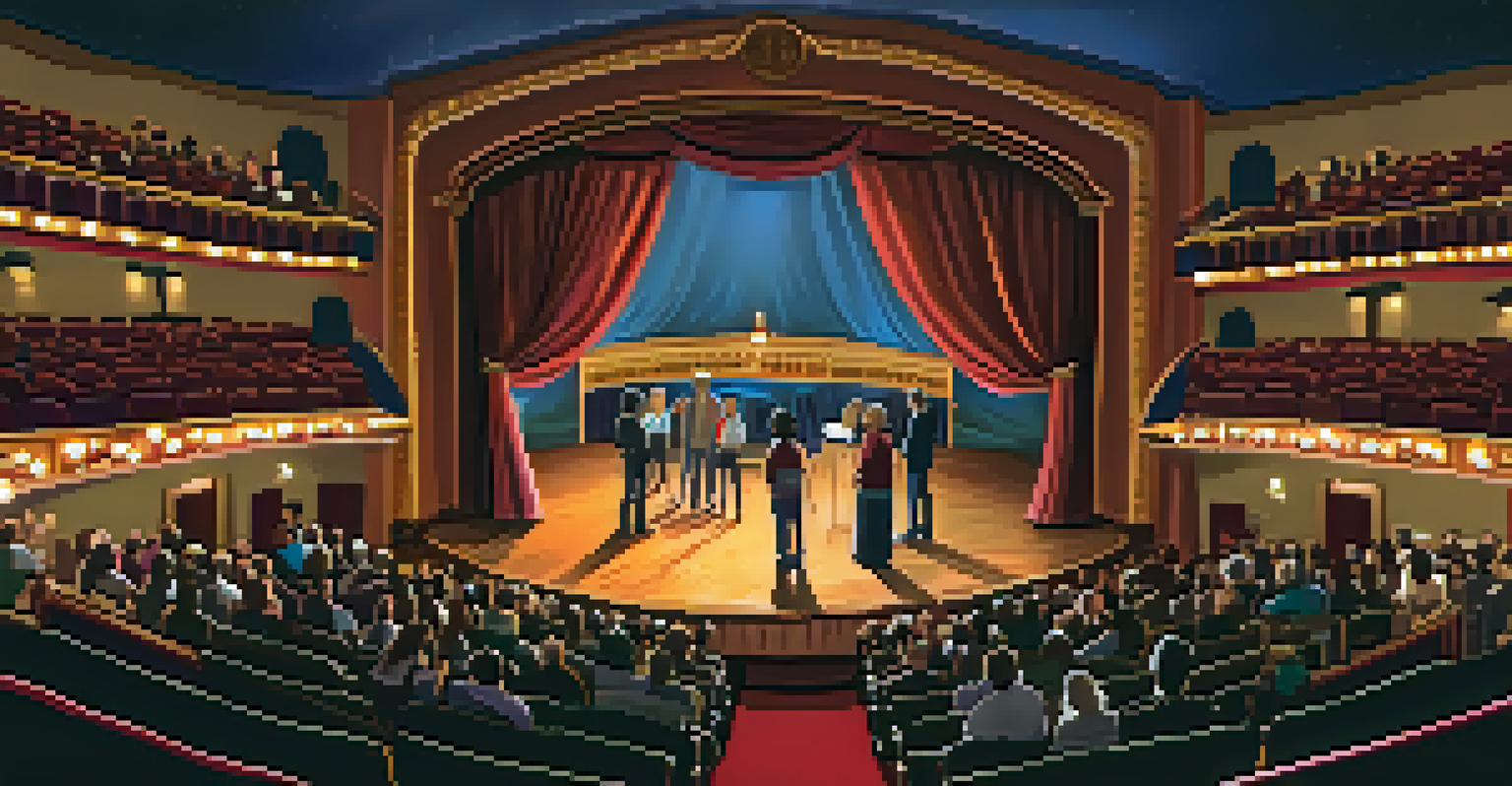Impact of Pasadena's Cultural Institutions on Local Economy

Introduction to Pasadena's Cultural Institutions
Pasadena is not just known for its beautiful architecture and vibrant streets; it's also home to a rich tapestry of cultural institutions. From museums to theaters, these cultural hubs attract visitors from all over, serving as a vital part of the community. They are more than just places for entertainment; they play a crucial role in the economic landscape of the city.
Culture is the cornerstone of a vibrant community, fostering connections and driving economic prosperity.
The city's cultural offerings include the Pasadena Playhouse, the Norton Simon Museum, and the Pacific Asia Museum, each contributing uniquely to both the local identity and the economy. By providing a variety of programs and exhibitions, they draw in tourists and locals alike, fostering a sense of community and belonging. These institutions are a reflection of Pasadena's diverse heritage and artistic spirit.
Beyond their artistic contributions, these institutions serve as significant economic engines. They create jobs, drive tourism, and generate revenue, demonstrating how culture and economy are intertwined in Pasadena.
Tourism and Economic Growth
One of the most immediate impacts of Pasadena's cultural institutions is their ability to attract tourists. Visitors flock to the city for events like the Rose Parade and exhibitions at local museums, contributing to a robust tourism economy. Each tourist who visits spends money on hotels, restaurants, and local businesses, creating a ripple effect that fuels the local economy.

For instance, the Norton Simon Museum attracts thousands of art lovers each year, with many visitors choosing to dine and shop in the surrounding areas. This not only boosts sales for local businesses but also creates jobs in sectors like hospitality and retail. The synergy between cultural institutions and tourism is a crucial driver of Pasadena's economic health.
Cultural Institutions Drive Tourism
Pasadena's cultural institutions attract tourists, significantly boosting the local economy through increased spending in hotels, restaurants, and shops.
Moreover, the city has seen a rise in cultural tourism initiatives that promote local attractions, further enhancing their economic impact. By positioning Pasadena as a cultural destination, the city aims to sustain and grow its economic base.
Employment Opportunities Created by Cultural Institutions
Pasadena's cultural institutions are also significant sources of employment. They employ a diverse range of workers, from administrative staff to creative professionals, fostering a vibrant job market. The employment opportunities provided not only support individuals but also contribute to the overall economic stability of the community.
The arts are not a luxury; they are a necessity for a thriving economy and a engaged society.
Additionally, these institutions often engage local artists and performers, giving them platforms to showcase their talents. This not only helps sustain the arts but also enriches the local economy by promoting creative industries. The jobs created within these institutions often have a multiplier effect, leading to even more job opportunities in related sectors.
By investing in culture, Pasadena invests in its workforce, ensuring that the skills and talents of its residents are nurtured and utilized effectively. This symbiotic relationship between culture and employment significantly bolsters the local economy.
Community Engagement and Economic Impact
Cultural institutions in Pasadena do more than provide entertainment; they foster community engagement. Events like workshops, lectures, and performances create spaces for residents to connect and collaborate, strengthening community ties. This engagement is essential for building a sense of belonging and pride among residents.
When community members actively participate in cultural events, they are more likely to support local businesses and initiatives. This creates a cycle of economic support that benefits everyone involved, from artists to small business owners. The more engaged a community is, the more likely it is to invest in its own economic development.
Jobs Created Through Cultural Engagement
Cultural institutions in Pasadena generate diverse employment opportunities, supporting both local artists and the broader economy.
Moreover, community engagement often leads to increased volunteerism and local investment, further enhancing the economic landscape. By nurturing a culture of participation, Pasadena's institutions not only enrich lives but also contribute to the city's economic resilience.
The Role of Education in Economic Development
Pasadena's cultural institutions play a vital role in education, offering programs that enrich the lives of students and residents alike. Educational initiatives such as museum tours, art classes, and theater workshops provide valuable learning experiences. These programs not only elevate the cultural landscape but also help develop the skills and talents of the local workforce.
By partnering with schools and universities, cultural institutions can create pathways for students to explore careers in the arts, education, and beyond. This educational focus supports long-term economic development by equipping the next generation with the skills they need to succeed. When students engage with the arts, they gain critical thinking and creativity skills that are valuable in any profession.
In essence, education through cultural institutions can lead to a more skilled workforce, which is a crucial component of a thriving economy. As students grow and enter the job market, they carry with them the lessons learned from their cultural experiences, benefiting the economy as a whole.
Sustainability and Economic Resilience
Sustainability is becoming increasingly important for cultural institutions, as they strive to reduce their environmental impact while also supporting the local economy. Many are adopting green practices, such as energy-efficient buildings and waste reduction initiatives, which not only help the environment but also save money in the long run. This commitment to sustainability can attract environmentally conscious visitors and donors alike.
By focusing on sustainability, Pasadena's cultural institutions also enhance their economic resilience. When equipped to navigate economic challenges, such as fluctuations in funding or visitor numbers, they can continue to operate effectively. This resilience is essential for maintaining the cultural vibrancy that attracts tourists and supports local businesses.
Education Fuels Economic Development
Educational programs offered by cultural institutions enhance skill development, preparing the next generation for successful careers and contributing to economic growth.
Furthermore, sustainable practices can lead to innovative partnerships with local organizations and businesses, creating new economic opportunities. By working together, these entities can address community needs while also fostering economic growth.
Conclusion: The Future of Pasadena's Cultural Economy
As we look towards the future, it's clear that Pasadena's cultural institutions will continue to play a pivotal role in shaping the local economy. Their contributions to tourism, employment, community engagement, and education create a rich tapestry of economic benefits that enhance the quality of life for residents and visitors alike. Investing in these institutions is investing in the future of Pasadena.
Moreover, as cultural institutions adapt to changing economic landscapes, they will likely find new ways to engage the community and attract visitors. By embracing innovation and sustainability, they can ensure their continued relevance and impact on the local economy. The future is bright for Pasadena's cultural scene, and its economic potential is vast.

In conclusion, the relationship between culture and economy in Pasadena is a dynamic one, offering numerous opportunities for growth and development. By supporting and celebrating these institutions, the community can foster a vibrant cultural economy that benefits everyone.